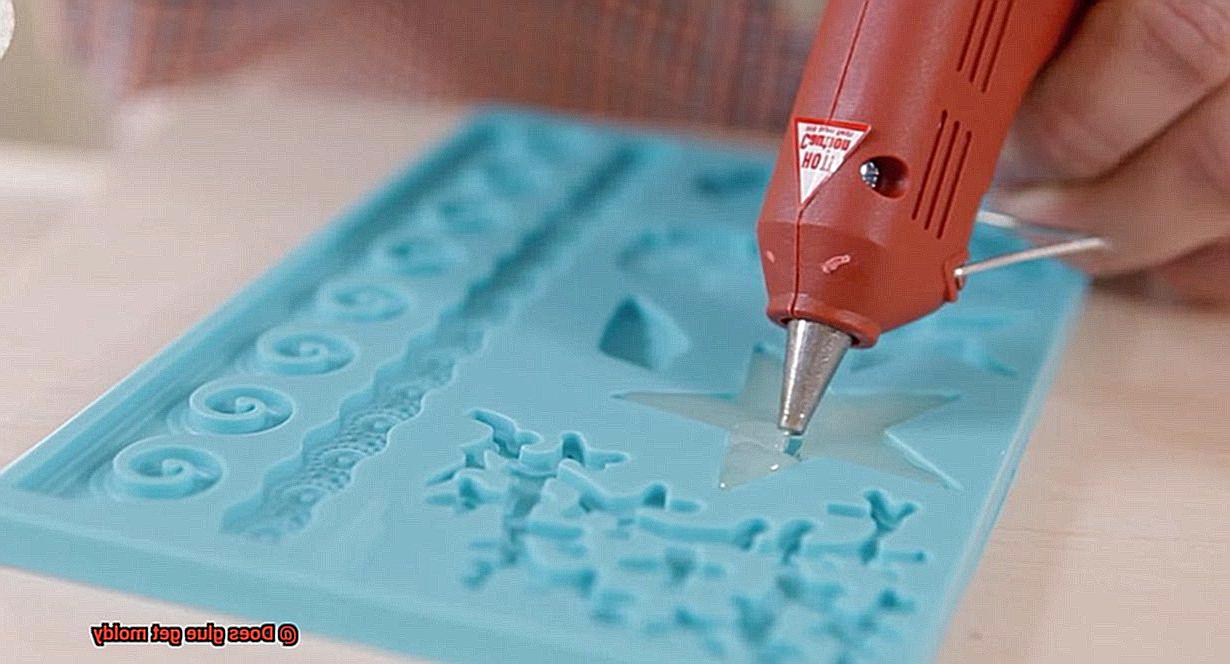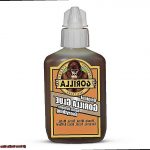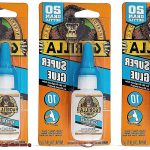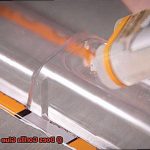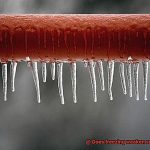It’s been there for us through thick and thin, helping us stick things together like a trusty sidekick. Whether it’s fixing a broken toy or creating a masterpiece out of popsicle sticks, glue has always had our backs. But here’s the burning question: can this sticky superhero withstand the relentless forces of nature? Specifically, can it fend off the dreaded mold?
In this blog post, we’re diving headfirst into the fascinating world of glue to uncover the truth about its moldy encounters. We’ve all witnessed those unsightly green patches growing on various surfaces, but does glue fall victim to this common fungal foe? Buckle up as we explore how mold affects glue, what causes it in the first place, and most importantly, how to prevent and combat this potential sticky situation.
Get ready to unravel the moldy mysteries and discover the hidden secrets of glue with us. We’re here to provide expert insights on this captivating question because let’s face it – when it comes to glue getting moldy, we all need answers.
The Impact of Glue Composition on Mold Growth
Contents
The impact of glue composition on mold growth is a topic of significant importance, as it directly affects the durability and longevity of adhesive products. Whether a glue is natural or synthetic, its composition plays a crucial role in determining its vulnerability to mold growth.
Natural glues, such as hide glue or bone glue, have been used for centuries in various applications. Derived from animal collagen, these organic glues are more prone to mold growth due to their susceptibility to moisture and organic decay. The presence of moisture is a critical factor for mold growth, and natural glues provide an ideal environment for mold spores to thrive.
On the other hand, synthetic glues made from chemical compounds like polyvinyl acetate (PVA) or epoxy are typically more resistant to mold growth. These glues are designed to withstand moisture and offer better durability compared to their natural counterparts. Their synthetic composition makes them less suitable as a food source for mold, reducing the likelihood of mold growth.
In addition to moisture, the presence of nutrients in the glue composition can also affect mold growth. Some glues may contain additives or fillers that provide nutrients for mold. For example, certain wood glues may include cellulose or other plant-based ingredients that can support mold growth when exposed to moisture.
Furthermore, the manufacturing process of the glue plays a significant role in its vulnerability to mold growth. Glues produced in controlled environments with stringent quality control measures are less likely to have mold-contaminated ingredients or packaging. Conversely, glues produced in less controlled environments or with inadequate storage conditions may be more susceptible to mold contamination.
It is important to note that even if a glue is resistant to mold growth, it does not guarantee complete immunity. Prolonged exposure to moisture or high humidity conditions can still result in the settlement of mold spores on the surface of the glue and potential growth. Regular maintenance and proper storage of glue are therefore essential in preventing mold growth.
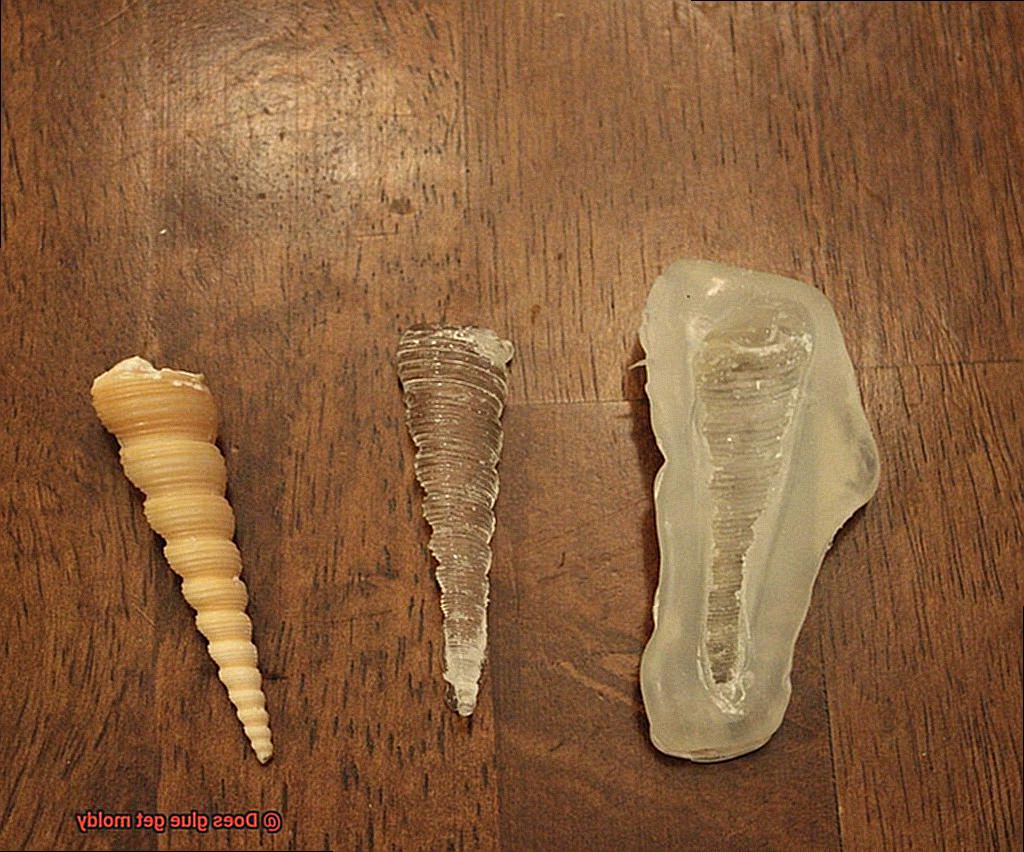
The Role of Storage Conditions in Mold Formation
The role of storage conditions in mold formation on glue is essential to understand in order to prevent the growth of mold and maintain the quality and effectiveness of the glue. Several factors contribute to mold formation, including moisture, temperature, darkness, and ventilation.
Moisture is the primary factor that promotes mold growth on glue. Mold spores are always present in the air, but they require a moist environment to grow. When glue comes into contact with moisture, whether it’s from high humidity or direct water exposure, it creates the perfect conditions for mold spores to thrive. To prevent mold formation, it is crucial to store glue in a dry environment and minimize exposure to moisture.
Temperature also plays a significant role in mold formation on glue. Mold loves warm temperatures, typically between 77°F (25°C) and 86°F (30°C). Storing glue in a cool environment can help deter mold growth. Additionally, extreme temperature fluctuations can cause condensation inside glue containers, leading to moisture buildup and potential mold issues. It is important to keep the storage area at a stable temperature to prevent condensation and mold growth.
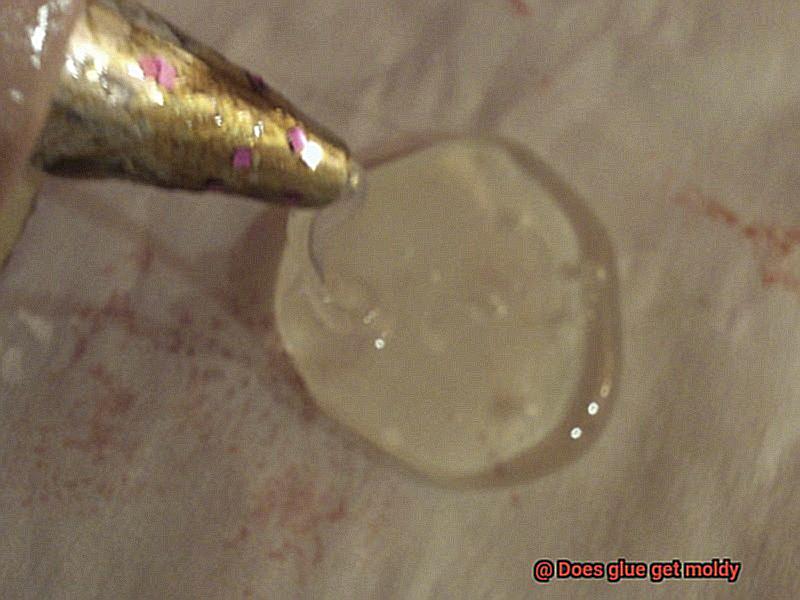
Darkness is another factor to consider when storing glue. Mold spores are activated by light exposure, causing them to multiply and form colonies. To minimize the risk of mold formation, store your glue in opaque containers or keep them away from direct sunlight.
Proper ventilation is crucial for preventing mold growth on glue. Adequate airflow helps reduce moisture buildup and creates an inhospitable environment for mold spores. Consider storing your glue in well-ventilated areas or using containers with ventilation holes.
It is important to note that different types of glue may have varying levels of susceptibility to mold growth. Water-based glues, such as white glue or wood glue, have higher moisture content and are more prone to mold formation. On the other hand, solvent-based glues like superglue or epoxy have lower moisture levels and are less susceptible to mold growth.
To prevent mold formation on glue, store it in a clean and dry environment. Keep the containers tightly sealed when not in use to minimize exposure to moisture and air. Regularly inspect stored glue for any signs of mold growth and discard contaminated products immediately.
In case mold does develop on your glue, it is advisable to dispose of the affected portion rather than attempting to remove the mold. Mold can release spores that may cause allergic reactions or respiratory issues when inhaled. It is better to err on the side of caution and replace moldy glue with a fresh batch.
How to Prevent Glue from Getting Moldy
Proper storage is the first step in preventing glue from getting moldy. Moisture is the main factor that promotes mold growth, so it’s important to store glue in a cool and dry place. Avoid areas with high humidity, as this can create the perfect environment for mold to thrive. Make sure the lid or cap of the glue container is tightly sealed after each use to prevent any moisture from entering.
In addition to proper storage, keeping glue away from sunlight is crucial. UV rays can deteriorate the adhesive properties of the glue and create a warm and humid environment that promotes mold growth. Store your glue in a cool and dark place, such as a cupboard or drawer, to maintain its quality and prevent mold formation.
If you live in a particularly humid climate or have experienced issues with mold in the past, using a dehumidifier in the room where you store your glue can help reduce overall moisture content. This makes it less likely for mold to develop on your glue or other materials.
Regular inspections are also important in preventing mold on glue. Mold typically appears as black or green spots on surfaces, so be sure to examine both the inside and outside of the glue bottle. If you notice any mold growth, discard the affected glue immediately to prevent spreading and potential damage to your projects.
You can also consider using an antibacterial agent or preservative to inhibit mold growth in your glue. There are commercial products available specifically designed for this purpose, which can be added according to the manufacturer’s instructions. These additives create an inhospitable environment for mold spores, preventing their growth.
What Types of Molds Are Harmful?
Molds are a type of fungi that can grow both indoors and outdoors. While not all molds are harmful, there are certain types that can pose health risks to humans and animals. It is crucial to understand the different types of molds that can be harmful so that appropriate precautions can be taken.
One common harmful mold is Stachybotrys chartarum, also known as black mold. This mold thrives in areas with high humidity and moisture, such as bathrooms, basements, and kitchens. Black mold has been linked to various health issues, including respiratory problems, allergic reactions, and even neurological symptoms in some cases.
Another harmful mold is Aspergillus, which is commonly found in soil and decaying organic matter. This mold can produce mycotoxins that can cause respiratory infections, allergic reactions, and even chronic lung diseases in individuals with weakened immune systems.
Penicillium is a type of mold that can be both beneficial and harmful. While it is commonly used to produce the antibiotic penicillin, certain species of Penicillium can also produce mycotoxins that can cause respiratory problems and allergic reactions.
Cladosporium is another common mold that can be harmful to human health. It is often found in damp areas such as basements and bathrooms. Exposure to Cladosporium has been linked to respiratory issues, skin rashes, and eye irritation.
Alternaria is a type of mold commonly found in damp environments such as showers and leaky pipes. This mold can trigger allergic reactions and asthma symptoms in susceptible individuals.
It is important to note that individual sensitivities vary, and what may be harmful to one person might not have the same effect on another. Additionally, prolonged exposure to any type of mold can increase the risk of developing health issues.
To prevent the growth of harmful molds, it is essential to address any moisture problems in your home or workplace. This includes fixing leaky pipes, improving ventilation, and controlling humidity levels. Regular cleaning and maintenance can also help prevent mold growth.
The Risks of Using Moldy Glue
Moldy glue may seem like a minor concern compared to the dangers of black mold in our homes, but it can still pose substantial risks to our health. Here are some key points to consider:
- Allergic Reactions: Mold spores in glue can trigger allergies in individuals who are sensitive or have pre-existing mold allergies. Sneezing, coughing, itchy eyes, and a runny nose are common symptoms. These allergic reactions can be uncomfortable and disruptive to daily life.
- Respiratory Issues: Inhaling mold spores from moldy glue can irritate the respiratory system and lead to coughing, wheezing, and difficulty breathing. People with asthma may experience worsened symptoms, making it harder for them to breathe properly. This can impact their overall well-being and quality of life.
- Infections: Moldy glue that comes into contact with the skin can cause rashes, itching, and redness. If the skin is broken or compromised, there is a risk of developing bacterial or fungal infections. These infections can be painful and require medical intervention to treat effectively.
To minimize these risks, it’s crucial to store glue properly in a cool and dry place away from moisture sources. Using glue within its recommended shelf life and sealing containers tightly can also help prevent mold growth. By taking these precautions, you can ensure that the glue you use is safe and free from harmful mold spores.
If you suspect you’ve been exposed to moldy glue and are experiencing symptoms such as allergies, respiratory issues, or skin irritations, it’s advisable to seek medical attention. A healthcare professional can diagnose any potential health problems and provide appropriate treatment. It’s always better to address any health concerns promptly rather than letting them escalate.
Tips for Storing Glue Properly
Choose the Right Storage Location:
The first step in storing glue properly is to find the right storage location. It’s important to choose a cool and dry place away from direct sunlight and extreme temperatures. Glue should be kept in an area with a temperature range of 50-70 degrees Fahrenheit (10-21 degrees Celsius) and a humidity level below 50%. This will help inhibit the growth of mold and keep the glue in good condition. Additionally, it’s crucial to keep glue containers away from water sources like sinks or pipes to prevent moisture exposure, as moisture can easily find its way into the container and promote mold growth.
Use Airtight Containers:
Storing glue in airtight containers or bottles is vital to prevent moisture from seeping in. Moisture is one of the main factors that can contribute to mold growth on glue. By using airtight containers, you can protect the glue from mold contamination and maintain its integrity. When selecting containers, make sure they have a tight-fitting lid or cap to ensure a proper seal.
Divide it into Smaller Portions:
If you have a large quantity of glue, it’s recommended to divide it into smaller portions and store them individually. This serves as a preventive measure in case one container gets contaminated with mold. By storing glue in smaller portions, you won’t lose all of your glue supply if mold develops in one container. It also makes it easier to use the glue in smaller quantities without exposing the rest of it to air and moisture.
Regularly Check for Mold:
Regularly checking your glue for any signs of mold is essential for maintaining its quality. Mold growth on glue can be identified through discoloration, strange smell, or visible growth. If you notice any of these signs, it’s best to discard the glue immediately to prevent compromising the quality of your projects. Using moldy glue can result in ineffective bonding and may lead to project failures.
Tightly Seal Containers:
After each use, it’s crucial to tightly seal the container to minimize exposure to air and moisture. This step is vital in extending the shelf life of the glue and reducing the risk of mold growth. By ensuring a tight seal, you create a barrier that prevents moisture from entering the container and coming into contact with the glue. This simple practice can significantly contribute to keeping your glue in good condition for future use.
Follow Manufacturer’s Instructions:
Always follow the manufacturer’s instructions on proper storage and shelf life recommendations for your specific type of glue. Different glues may have different requirements, so it’s important to adhere to these guidelines for optimal performance and longevity. The manufacturer’s instructions often provide valuable information about the ideal storage conditions, expiration dates, and precautions to take to prevent mold growth. By following these instructions, you can ensure that you are storing your glue in the best possible way to prevent mold contamination.
Signs of Mold on Glue
Mold is a persistent and sneaky enemy that can take hold of even the most unsuspecting places, including glue. If you’re an avid crafter or regularly use glue for various projects, it’s crucial to be able to identify the signs of mold growth on glue. Not only can it ruin your adhesive, but it can also pose potential health risks. So, what are the signs to look out for?
- Black or Greenish Spots or Patches: Mold on glue often presents itself as unsightly black or greenish spots or patches. These invasive intruders may appear fuzzy, slimy, or have a powdery texture, signaling their presence.
- Musty Odor: Mold has a distinct musty smell that can infiltrate your senses. If you detect an unusual odor emanating from your glue, it’s a red flag that mold may have taken up residence. Don’t ignore it; act swiftly.
- Change in Color or Texture: Another clear indication of mold on glue is a change in its color or texture. If your once clear adhesive starts to develop dark streaks, become discolored, or feels sticky and slimy when touched, mold contamination is likely the culprit.
- Visible Mold Growth: In some cases, mold growth becomes visible to the naked eye. If you spot fuzzy patches or a powdery substance on the surface of your glue, it’s a definite sign that mold has made its presence known.
- Allergic Reactions: Mold can cause allergic reactions in susceptible individuals. If you experience sneezing fits, persistent coughing, watery eyes, or skin irritation after handling moldy glue, it’s best to avoid direct contact and seek medical advice promptly.
It’s important to note that not all molds are easily visible. Some insidious strains may lurk beneath the surface of the glue, making detection challenging. Therefore, if you suspect mold contamination, it’s better to err on the side of caution and discard the affected glue, replacing it with a fresh batch.
Id7AduvPseo” >
Conclusion
In conclusion, this blog post has thoroughly explored the question of whether glue can get moldy. The vulnerability of glue to mold growth depends on its composition. Natural glues, derived from animal collagen, are particularly susceptible due to their affinity for moisture and organic decay. On the other hand, synthetic glues made from chemical compounds like polyvinyl acetate (PVA) or epoxy tend to be more resistant.
To prevent mold formation on glue, it is crucial to consider storage conditions. Moisture, temperature, darkness, and ventilation all contribute to the growth of mold. Therefore, it is essential to store glue in a cool and dry place away from direct sunlight. Using airtight containers and regularly checking for mold are also important precautions. Additionally, tightly sealing containers after each use can help minimize the risk of mold growth.
It is worth noting that different types of molds can be harmful and pose risks to our health. Respiratory issues, allergies, and even infections can result from exposure to these molds. To ensure our safety, addressing any moisture problems in our homes or workplaces becomes paramount in preventing the growth of harmful molds.
Using moldy glue can have adverse effects on our health such as allergic reactions, respiratory issues, and skin infections. Thus, it is crucial to store glue properly and conduct regular inspections to ensure that we are using safe adhesive free from harmful mold spores.
By following these tips for proper storage and being vigilant about signs of mold on glue surfaces, we can maintain the quality and effectiveness of our adhesive while minimizing potential health risks.

